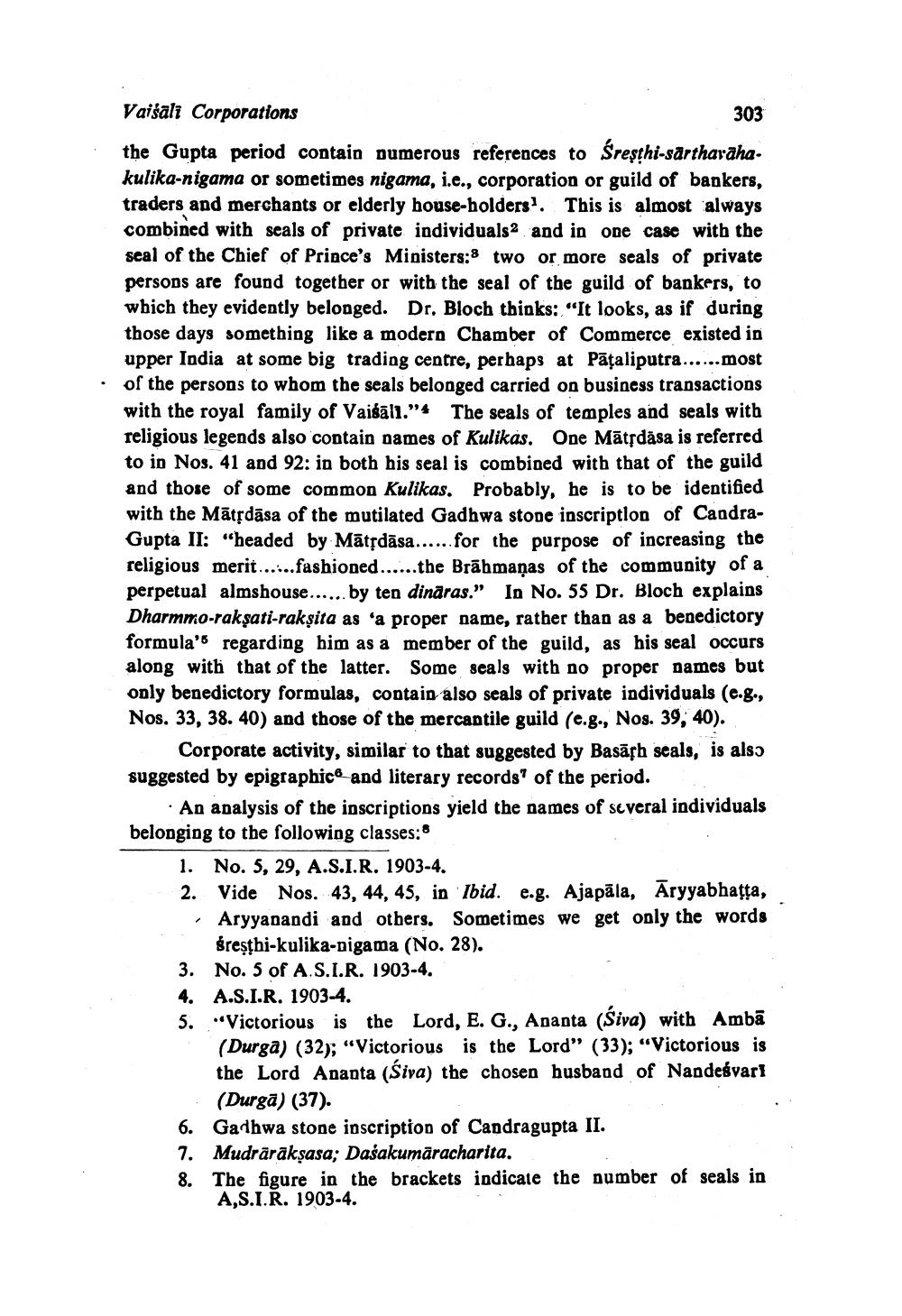________________ Vaisali Corporations 303 the Gupta period contain numerous references to Sresthi-sartharaha. kulika-nigama or sometimes nigama, i.e., corporation or guild of bankers, traders and merchants or elderly house-holders. This is almost always combined with seals of private individuals and in one case with the seal of the Chief of Prince's Ministers:8 two or more seals of private persons are found together or with the seal of the guild of bankers, to which they evidently belonged. Dr. Bloch thinks: "It looks, as if during those days something like a modern Chamber of Commerce existed in upper India at some big trading centre, perhaps at Pasaliputra...... most of the persons to whom the seals belonged carried on business transactions with the royal family of Vaisali."4 The seals of temples and seals with religious legends also contain names of Kulikas. One Matndasa is referred to in Nos. 41 and 92: in both his seal is combined with that of the guild and those of some common Kulikas. Probably, he is to be identified with the Matpdasa of the mutilated Gadhwa stone inscription of CandraGupta II: "headed by Matpdasa......for the purpose of increasing the religious merit......fashioned......the Brahmanas of the community of a perpetual almshouse...... by ten dinaras." In No. 55 Dr. Bloch explains Dharmmo-raksati-raksita as a proper name, rather than as a benedictory formula's regarding him as a member of the guild, as his seal occurs along with that of the latter. Some seals with no proper names but only benedictory formulas, contain also seals of private individuals (e.g., Nos. 33, 38. 40) and those of the mercantile guild (e.g., Nos. 39, 40). Corporate activity, similar to that suggested by Basalh seals, is als suggested by epigraphic and literary records of the period. An analysis of the inscriptions yield the names of several individuals belonging to the following classes: 1. No. 5, 29, A.S.I.R. 1903-4. 2. Vide Nos. 43, 44, 45, in Ibid. e.g. Ajapala, Aryyabhatta, Aryyanandi and others. Sometimes we get only the words sresthi-kulika-nigama (No. 28). 3. No. 5 of A.S.I.R. 1903-4. 4. A.S.I.R. 1903-4. 5. "Victorious is the Lord, E. G., Ananta (Siva) with Amba (Durga) (32); "Victorious is the Lord" (33); "Victorious is the Lord Ananta (Siva) the chosen husband of Nandesvar! (Durga) (37). 6. Gadhwa stone inscription of Candragupta II. 7. Mudraraksasa; Dasakumaracharita. 8. The figure in the brackets indicate the number of seals in A,S.I.R. 1903-4.




